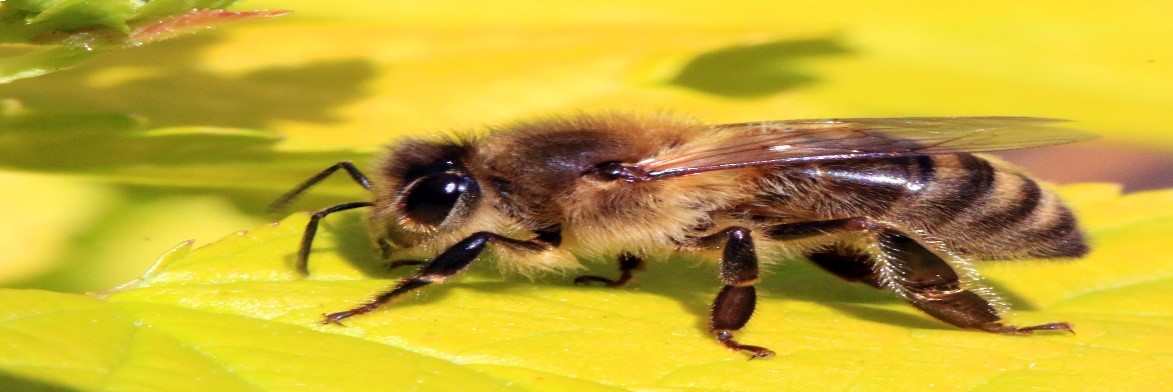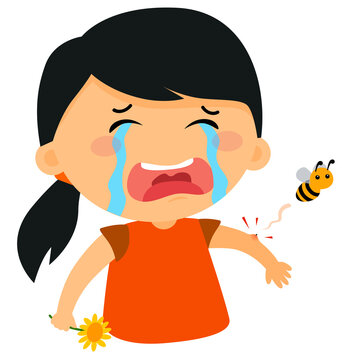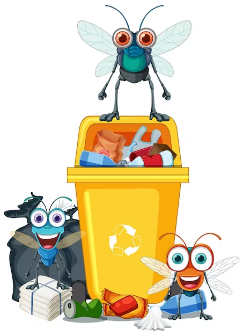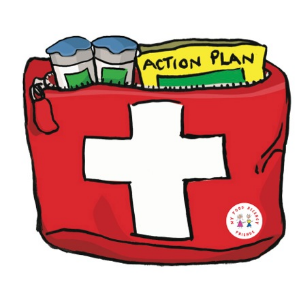Disclaimer [ENGLISH]
Disclaimer: This material is for educational purposes only. You, the reader, assume full responsibility for how you choose to use it. It is not intended to provide medical advice, diagnosis or treatment, nor does it replace the advice or counsel of a doctor or health care professional. Reference to a specific commercial product or service does not imply endorsement or recommendation of that product or service by CPCMG.
Why is my child reacting to a sting?
- A sting injects venom into the skin.
- This venom causes the reaction - usually pain, redness and swelling.
- Insects that have stingers include honeybees, wasps, bumble bees, yellow jackets, hornets, and imported fire ants.

What are the symptoms of a sting?

- Pain, swelling and redness around the area of the sting.
- Pain usually lasts for one to two hours.
- The swelling usually improves in 48 hours (about 2 days).
- It may still take five to ten days to return to normal.
- Hives may develop around the area or even on other parts of the body.
- A sting on the face may lead to eyelid swelling as well.
- Imported Fire Ants may cause:
- a pus-filled bump
- trouble breathing.
- feeling like their throat is closed
- hoarse voice or wheeze.
- swelling of lips or other parts of their body
- feeling dizzy or faint
How do I prevent my child from getting stung?

- Wear shoes while outside.
- Watch for bees while in pools.
- Be careful in orchards, gardens, and areas with lots of flowers. Dumpsters and trash cans are another attractant, keeping your children away from these areas is best.
- Check for nests and hives around your house and where your children play.
- Avoid colorful clothing and floral prints – instead, wear colors like white, khaki, green, or tan.
- Avoid swatting at or running from stinging insects, it is best to walk away calmly to avoid angering the insect.
- Some foods attract stinging insects. Try to avoid eating the foods listed below when outside:
- Tuna, peanut butter and jelly sandwiches, watermelon, sweetened drinks, ice cream and frozen treats
- Insect repellants are not effective for prevention of stings.
What if my child is allergic?

-
If your child has a known allergy to insect stings:
- Always have their EpiPen available.
- Make sure all care providers are aware of their allergy.
- Remember: if your child’s EpiPen is used, call 911 for more help!
What is the treatment for a sting?
- Cool compresses can help provide comfort and relieve swelling.
- Ibuprofen and Tylenol can help with pain treatment .
- You do want to remove the stinger if a portion of it sticking out (only honeybees leave the stinger in).
- Keep the area covered if your child continues to itch or pick at it.
- It is okay to apply anti-itch remedies that are age appropriate and available over-the-counter.
- Infections from stings are rare, but if you notice streaking redness, swelling continues beyond 48 hours (about 2 days) or your child has a fever your child needs to be seen.
- If your child has an allergy to stings, follow your child’s allergy plan.
- If your child has an EpiPen and you think your child has been stung, give the EpiPen and call 911.
Call your provider if:
- You think your child needs to be seen.
- Swelling is worsening after 48 hours (about 2 days).
- Your child has a fever.
- Your child’s symptoms are getting worse.
- Your child has a known allergy to any of these stinging insects.
- You notice red streaks spreading around the area of the sting.
Call 911 if:
- Your child is having trouble breathing or swallowing.
- Your child needed to use their EpiPen.
This publication was adapted from information within American Academy of Pediatrics Patient Education Handouts, UpToDate Guidelines and Healthychildren.org
Reviewed by: TT D.O, AR D.O. | 10/2023


